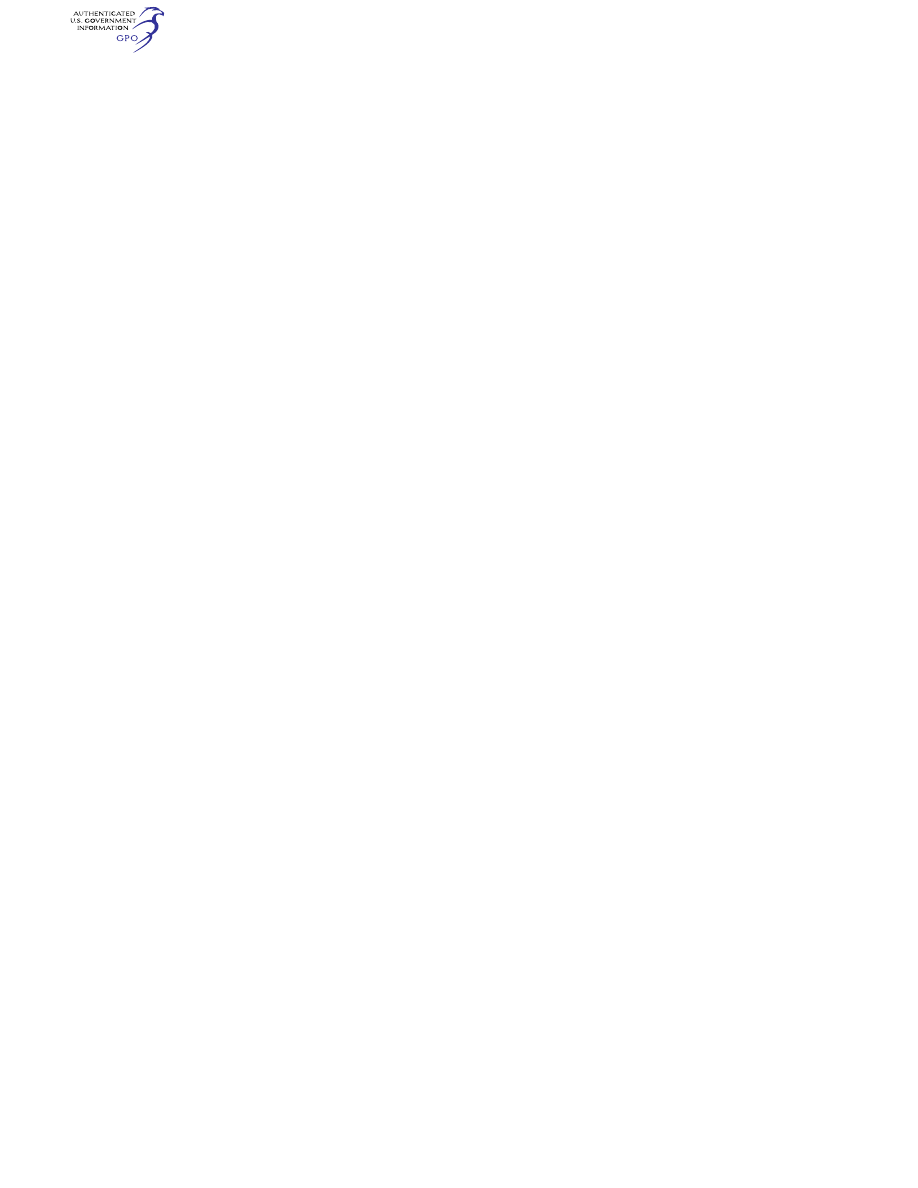
199
Federal Aviation Administration, DOT
§ 121.463
and the visibility at that airport is at
least 3 miles.
(d) No certificate holder may use any
person, nor may any person serve, as
pilot in command between terminals
over a route or area that requires a
special type of navigation qualification
unless, within the preceding 12 cal-
endar months, that person has dem-
onstrated qualification on the applica-
ble navigation system in a manner ac-
ceptable to the Administrator, by one
of the following methods:
(1) By flying over a route or area as
pilot in command using the applicable
special type of navigation system.
(2) By flying over a route or area as
pilot in command under the super-
vision of a check airman using the spe-
cial type of navigation system.
(3) By completing the training pro-
gram requirements of appendix G of
this part.
[Doc. No. 17897, 45 FR 41594, June 19, 1980]
§ 121.447 [Reserved]
§ 121.453 Flight engineer qualifica-
tions.
(a) No certificate holder may use any
person nor may any person serve as a
flight engineer on an airplane unless,
within the preceding 6 calendar
months, he has had at least 50 hours of
flight time as a flight engineer on that
type airplane or the certificate holder
or the Administrator has checked him
on that type airplane and determined
that he is familiar and competent with
all essential current information and
operating procedures.
(b) A flight check given in accord-
ance with § 121.425(a)(2) satisfies the re-
quirements of paragraph (a) of this sec-
tion.
[Doc. No. 9509, 35 FR 96, Jan. 3, 1970]
§§ 121.455–121.459 [Reserved]
Subpart P—Aircraft Dispatcher
Qualifications and Duty Time
Limitations:
D
OMESTIC AND
F
LAG
O
PER
-
ATIONS
; F
LIGHT
A
TTENDANT
D
UTY
P
E
-
RIOD
L
IMITATIONS AND
R
EST
R
EQUIRE
-
MENTS
: D
OMESTIC
, F
LAG
,
AND
S
UPPLE
-
MENTAL
O
PERATIONS
§ 121.461 Applicability.
This subpart prescribes—
(a) Qualifications and duty time limi-
tations for aircraft dispatchers for cer-
tificate holders conducting domestic
flag operations; and
(b) Duty period limitations and rest
requirements for flight attendants used
by certificate holders conducting do-
mestic, flag, or supplemental oper-
ations.
[Doc. No. 28154, 61 FR 2612, Jan. 26, 1996]
§ 121.463 Aircraft dispatcher qualifica-
tions.
(a) No certificate holder conducting
domestic or flag operations may use
any person, nor may any person serve,
as an aircraft dispatcher for a par-
ticular airplane group unless that per-
son has, with respect to an airplane of
that group, satisfactorily completed
the following:
(1) Initial dispatcher training, except
that a person who has satisfactorily
completed such training for another
type airplane of the same group need
only complete the appropriate transi-
tion training.
(2) Operating familiarization con-
sisting of at least 5 hours observing op-
erations under this part from the flight
deck or, for airplanes without an ob-
server seat on the flight deck, from a
forward passenger seat with headset or
speaker. This requirement may be re-
duced to a minimum of 2
1
⁄
2
hours by the
substitution of one additional takeoff
and landing for an hour of flight. A per-
son may serve as an aircraft dispatcher
without meeting the requirement of
this paragraph (a) for 90 days after ini-
tial introduction of the airplane into
operations under this part.
(b) No certificate holder conducting
domestic or flag operations may use
any person, nor may any person serve,

200
14 CFR Ch. I (1–1–24 Edition)
§ 121.465
as an aircraft dispatcher for a par-
ticular type airplane unless that per-
son has, with respect to that airplane,
satisfactorily completed differences
training, if applicable.
(c) No certificate holder conducting
domestic or flag operations may use
any person, nor may any person serve,
as an aircraft dispatcher unless within
the preceding 12 calendar months the
aircraft dispatcher has satisfactorily
completed operating familiarization
consisting of at least 5 hours observing
operations under this part, in one of
the types of airplanes in each group to
be dispatched. This observation shall
be made from the flight deck or, for
airplanes without an observer seat on
the flight deck, from a forward pas-
senger seat with headset or speaker.
The requirement of paragraph (a) of
this section may be reduced to a min-
imum of 2
1
⁄
2
hours by the substitution
of one additional takeoff and landing
for an hour of flight. The requirement
of this paragraph may be satisfied by
observation of 5 hours of simulator
training for each airplane group in one
of the simulators approved under
§ 121.407 for the group. However, if the
requirement of paragraph (a) is met by
the use of a simulator, no reduction in
hours is permitted.
(d) No certificate holder conducting
domestic or flag operations may use
any person, nor may any person serve
as an aircraft dispatcher to dispatch
airplanes in operations under this part
unless the certificate holder has deter-
mined that he is familiar with all es-
sential operating procedures for that
segment of the operation over which he
exercises dispatch jurisdiction. How-
ever, a dispatcher who is qualified to
dispatch airplanes through one seg-
ment of an operation may dispatch air-
planes through other segments of the
operation after coordinating with dis-
patchers who are qualified to dispatch
airplanes through those other seg-
ments.
(e) For the purposes of this section,
the airplane groups, terms, and defini-
tions in § 121.400 apply.
[Doc. No. 7325, 37 FR 5607, Mar. 17, 1972, as
amended by Amdt. 121–251, 60 FR 65934, Dec.
20, 1995]
§ 121.465 Aircraft dispatcher duty time
limitations: Domestic and flag oper-
ations.
(a) Each certificate holder con-
ducting domestic or flag operations
shall establish the daily duty period for
a dispatcher so that it begins at a time
that allows him or her to become thor-
oughly familiar with existing and an-
ticipated weather conditions along the
route before he or she dispatches any
airplane. He or she shall remain on
duty until each airplane dispatched by
him or her has completed its flight, or
has gone beyond his or her jurisdiction,
or until he or she is relieved by another
qualified dispatcher.
(b) Except in cases where cir-
cumstances or emergency conditions
beyond the control of the certificate
holder require otherwise—
(1) No certificate holder conducting
domestic or flag operations may sched-
ule a dispatcher for more than 10 con-
secutive hours of duty;
(2) If a dispatcher is scheduled for
more than 10 hours of duty in 24 con-
secutive hours, the certificate holder
shall provide him or her a rest period
of at least eight hours at or before the
end of 10 hours of duty.
(3) Each dispatcher must be relieved
of all duty with the certificate holder
for at least 24 consecutive hours during
any seven consecutive days or the
equivalent thereof within any calendar
month.
(c) Notwithstanding paragraphs (a)
and (b) of this section, a certificate
holder conducting flag operations may,
if authorized by the Administrator,
schedule an aircraft dispatcher at a
duty station outside of the 48 contig-
uous States and the District of Colum-
bia, for more than 10 consecutive hours
of duty in a 24-hour period if that air-
craft dispatcher is relieved of all duty
with the certificate holder for at least
eight hours during each 24-hour period.
[Doc. No. 28154, 61 FR 2612, Jan. 26, 1996]
§ 121.467 Flight attendant duty period
limitations and rest requirements:
Domestic, flag, and supplemental
operations.
(a) For purposes of this section—
Calendar day
means the period of
elapsed time, using Coordinated Uni-
versal Time or local time, that begins

